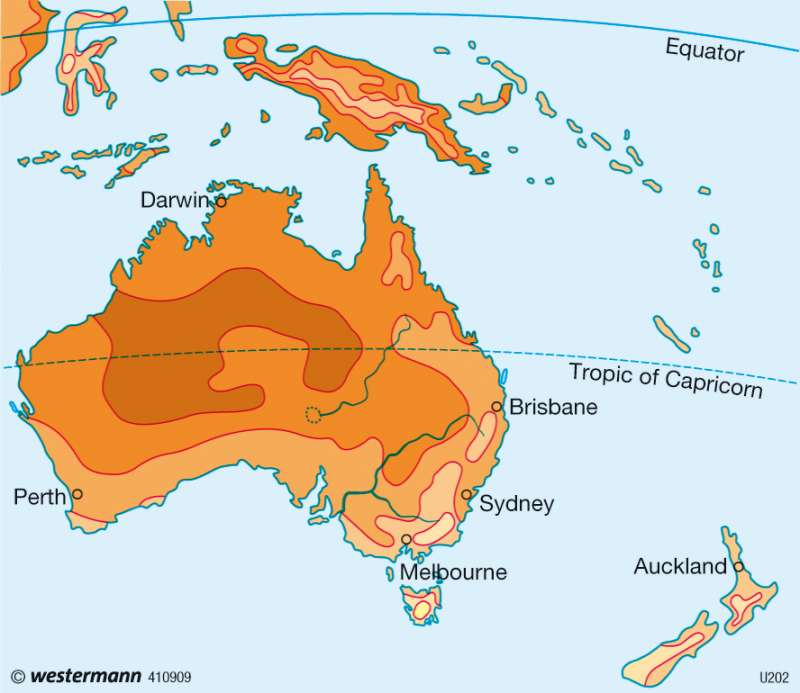January temperature
Australia and New Zealand
978-3-14-100790-9 | Page 120 | Ill. 3

Information
Large parts of Australia are solar-climatic in the area known as the tropics and subtropics. The boundary between them passes near the southern tropic. Here, the dominant influence of the high-pressure belt of the southern hemisphere characterises the climate of large parts of the continent. The combination of windward-leeward effects and high altitude creates such a wide range of climatic conditions between dry and frequently humid tropics and between dry and moist subtropic summer and winter. In the area of Tasmania, Australia extends to the south right up into the southern mid latitude, as does New Zealand. With a few exceptions, the Pacific islands lie in the tropics.Map: temperatures in January
The temperature distribution in Australia shows a marked dependence on latitude, the degree of continentality and altitude. In January, during the austral summer, high average temperatures of above 30 °C can be experienced in the interior of Australia. Land masses heat up increasingly when they are below the subtropical high pressure belt, than the surrounding water areas. A temperature decrease to the south appears with the increasing latitude. Also, cooler altitudes of the Australian mountains are evident in the east and southeast. In January, temperatures there reach only 10 °C to 15 °C.
A. Siegmund; Ü: Colette Fleming




